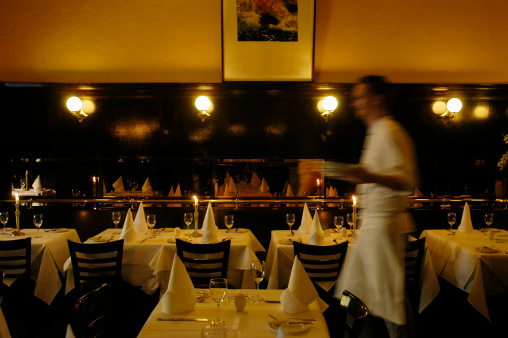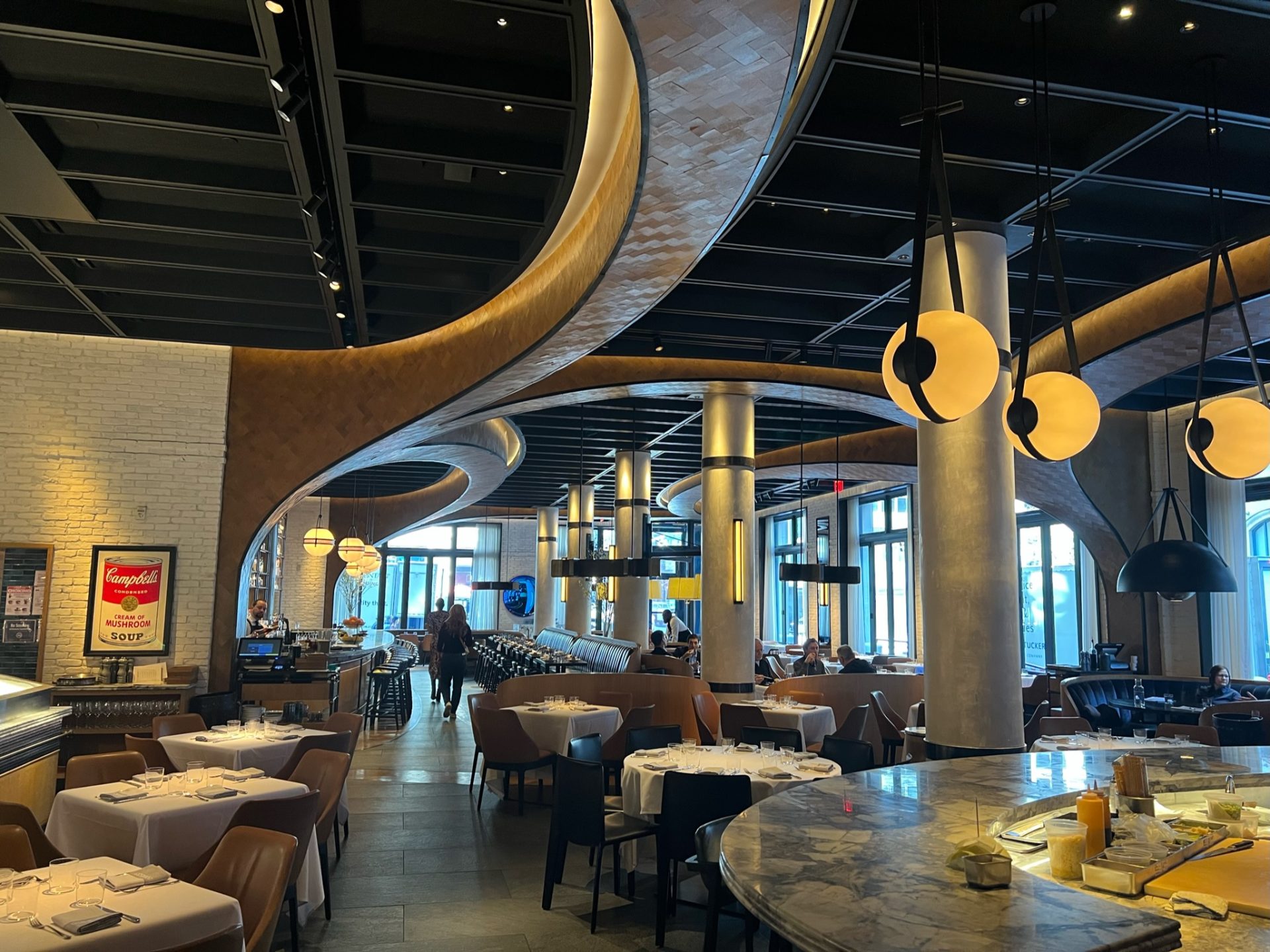Fine Dining Experience Islamabad: Delight In Extravagant Culinary Joys
Fine Dining Experience Islamabad: Delight In Extravagant Culinary Joys
Blog Article
Savor Genuine Oriental Cuisine With a Pan-Asian Spin for a Cooking Journey
Beginning on a culinary trip with genuine Asian food, improved with a Pan-Asian spin, uses a special opportunity to discover the abundant tapestry of flavors that specify the area's diverse cooking customs. This experience invites you to relish the exquisite equilibrium of tastes-- wonderful, salted, spicy, and sour-- harmonized by fragrant natural herbs and flavors. Imagine the ingenious combination of Thai curry and ramen or the unforeseen joy of sushi burritos. As you consider these luring meals, think about the social narratives and historical impacts that form them, each bite supplying a tale waiting to be uncovered.

Discovering Pan-Asian Flavors
In the world of global gastronomy, Pan-Asian food stands apart for its amazing variety and the harmonious interaction of flavors from different Oriental cultures. This culinary strategy commemorates the abundant traditions and special active ingredients located across the continent, producing a tapestry of preferences that is both gratifying and intriguing. Key to Pan-Asian cuisine is its ability to balance contrasting flavors-- wonderful, salted, spicy, and sour-- while highlighting the quality and high quality of each active ingredient.
From the umami-rich soy sauce of Japan to the intense chili peppers of Thailand, Pan-Asian cuisine provides an extensive scheme of flavors. These elements are often incorporated in creative methods, enhancing recipes with layers of complexity. As an example, the usage of great smelling natural herbs such as lemongrass and cilantro, usual in Vietnamese and Thai food, adds a refreshing brightness to dishes, while the consolidation of coconut milk delivers a creamy, rich texture.
The emphasis on fresh produce and aromatic flavors guarantees that each dish is not just a feast for the taste buds yet likewise for the detects. Pan-Asian cuisine invites diners to embark on a cooking journey, discovering the substantial and varied landscapes of Oriental gastronomy with every bite.
Blend Dishes to Try
While Pan-Asian cuisine is celebrated for its standard flavors, the modern-day cooking landscape is progressively accepting fusion meals that blend these timeless aspects with influences from other areas. This innovative strategy not only honors the rich heritage of Oriental cooking arts yet additionally presents unique preference experiences that interest contemporary tastes buds.
A prime instance of such a blend meal is the Korean-Mexican taco, where seasoned bulgogi beef is wrapped in a warm tortilla, covered with kimchi and a hot gochujang-infused salsa. This mix weds the strong, tasty tastes of Korea with the dynamic, fresh components of Mexican food. Likewise, sushi burritos have actually acquired popularity, integrating the delicate artistry of Japanese sushi with the passionate, hand-held ease of a burrito, typically including blend ingredients like tempura shrimp and avocado with a drizzle of wasabi mayo.
An additional notable recipe is Thai curry ramen, which instills the velvety, aromatic flavors of Thai curry into the soothing broth of traditional Japanese ramen, producing a harmonious blend that tantalizes the detects. These blend dishes extend beyond simple uniqueness; they stand for a culinary discussion in between cultures, encouraging expedition and development in the world of Pan-Asian food.
Crucial Active Ingredients and Seasonings
To really appreciate Pan-Asian food, one must comprehend the necessary ingredients and spices that develop its structure. This varied culinary design draws from an abundant tapestry of Asian practices, employing an unified blend of flavors and appearances.
Aromatic components are critical, with garlic, lemongrass, and ginger being ubiquitous across different Pan-Asian dishes. These ingredients give a great smelling base that boosts the complexity of flavors. Flavors such as star anise, cardamom, and cinnamon present heat and character, echoing impacts from regions like China and India.

Cooking Strategies and Tips
Grasping the art of Pan-Asian food calls for experience with its unique cooking strategies, each adding to the vibrant tapestry of tastes this culinary custom is commemorated for. Central to these techniques is the stir-fry, a rapid food preparation method that preserves the nutritional integrity and vivid shades of ingredients. Making use of a frying pan, the stir-fry technique allows useful source for even warmth circulation, essential for accomplishing the characteristic texture and taste balance of Pan-Asian dishes.
One more fundamental method is steaming, especially widespread in Chinese cuisine. This mild approach maintains the natural flavors and nutrients of components, making it suitable for seafood and vegetables. Dumplings, a beloved staple, commonly benefit from steaming, leading to soft, delicious textures.
Grilling, also integral, imparts great smoky depths to recipes such as Oriental bulgogi or Japanese yakitori (pan asian dining Islamabad). This method usually includes marinading active ingredients, enabling tastes to pass through deeply before food preparation over an open fire or warmer
Finally, understanding the art of stabilizing tastes-- sweet, sour, salted, bitter, and umami-- is critical. Appropriately layering these aspects can elevate a dish from average to amazing, supplying a complicated and pleasing culinary experience that embodies the significance of Pan-Asian cuisine.
Dining Experiences Worldwide
Throughout the world, Pan-Asian food offers an unequaled eating experience, commemorated for its rich tapestry of flavors and lively discussions. This cooking phenomenon has their website actually transcended cultural boundaries, recording the hearts and tastes buds of food enthusiasts worldwide. In worldwide cities like New York, London, and Sydney, Pan-Asian dining establishments work as melting pots where culinary practices from Thailand, Japan, China, and past assemble, giving diners with an eclectic mix of meals that highlight the region's diversity.
The global appeal of Pan-Asian food depends on its ability to supply both credibility and innovation. Cooks skillfully marry conventional components such as lemongrass, soy sauce, and miso with contemporary techniques, leading to dishes that are both refreshingly new and acquainted. This fusion enables diners to start a cooking trip that respects heritage while embracing modernity.
Moreover, eating experiences are boosted through thoughtfully designed atmospheres that show the principles of Pan-Asian appearances. From minimalist Japanese-inspired insides to vivid Thai-themed rooms, each dining establishment uses a distinct setting that matches the culinary offerings. Because of this, patrons are not simply consuming a dish yet partaking in a cultural experience, making Pan-Asian eating a genuinely global phenomenon.
Verdict
The exploration of Pan-Asian cuisine supplies a profound understanding of the intricate interaction of tastes and cooking customs across Asia. By accepting blend meals such as Thai curry ramen and sushi burritos, the culinary trip not just highlights the flexibility of traditional ingredients but likewise showcases innovative modern-day methods. This gastronomic journey, enhanced by crucial spices and cooking techniques, offers a distinct chance to value the cultural variety and cooking creativity that specify Pan-Asian food on a global range.
Embarking on a culinary trip with authentic Eastern food, enhanced with a Pan-Asian twist, uses an unique opportunity to explore the rich tapestry of flavors that define see this site the area's diverse culinary practices.In the realm of worldwide gastronomy, Pan-Asian food stands out for its remarkable variety and the unified interaction of tastes from numerous Asian societies. Key to Pan-Asian food is its capability to stabilize different tastes-- sweet, salty, spicy, and sour-- while highlighting the quality and high quality of each ingredient.

Report this page